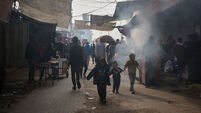Libyan rebels battle to keep key city
Libyan government soldiers and rebel gunmen battled in the streets of a key front-line city today.
The clashes came after government troops used shelling and guerrilla-style tactics to open their most serious push into opposition territory since international air strikes began.














